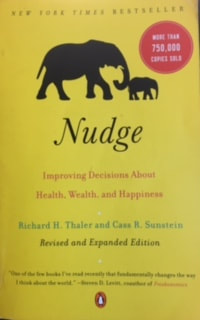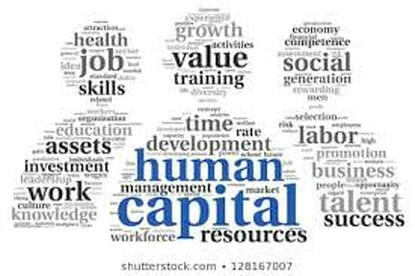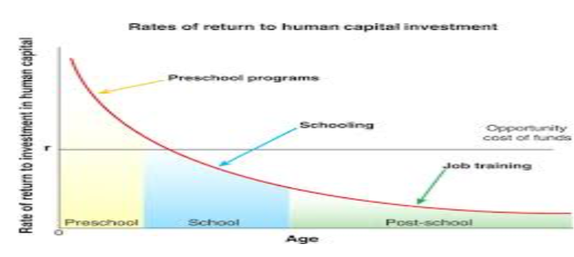|
5/31/2019 Continuing the Discussion on Human Capital and Sustainable Development and the evolving lessons about Human DevelopmentRead Now Some interesting issues were raised in reaction to the May 10, 2019 Blog, “Human Capital and Sustainable Development”. Among them were those requiring that attention be paid to options ( among others) that are:
These are all probing concerns that make adequate responses, challenging Responding to Institution-centric thoughts and practices Over the many years, the world has been galvanized around targets set by key international institutions. Notwithstanding their flaws, the UN Millennium Development Goals (MDGs) 2000-2015 and its successor, the Sustainable Development Goals (SDGs) 2015-2030 have established targets around which countries have measured progress and criteria for funding international causes. The Global Fund for AIDS, Malaria and TB (GFATM) is a very important example of using a standard metric, level of economic status and burden of disease to direct international assistance to check the spread of these diseases. The UNDP-led Human Development Index (HDI) in the 1990s created a useful basis for combining the traditional GDP measure of development with other social indicators such as human rights, governance, educational attainment, and health outcomes that ranked the human development profiles of countries. Among the 58 countries in the very high HDI category led by Norway , Switzerland, Australia and Ireland in that order are the Bahamas at 54 and Barbados at 58. These institutional-centric metrics have a tendency galvanized performance enhancing measures among countries in the UN system around common goals and targets. Rectifying Sociological gaps The GOFAD blog (May 24, 2019) reviewing Thaler and Sustein’s book, Nudge provides an apt illustration of how interventions through behavioral research can fill ‘the sociology gap’ in the institutional-centered metrics. The approach is deemed to help people, government agencies, companies and charities to make better decisions. These decisions are wide ranging: from choosing a credit card, to reducing harmful pollution, avoiding fatty foods, and making long term plans that affect human development. At the same time, the Sustainable Development Goals (SDGs) for example, were created and adopted by United Nations through an extensive process of technical and civil society focus group sessions. They provided an expansive blueprint on what countries need to do to reduce poverty and hunger, education and gender inequalities; enhance health and well-being and access to clean water and sanitation; accelerate responses to achieve affordable and clean energy and pave the way for decent work and economic growth and the prospects for peace, security, social justice and global social justice. The lessons from Investments in Human Capital The Human Capital Project being promoted by the World Bank Group provides a useful metric that helps to standardize links between human and economic development. It nurtures a whole of Government approach that revolves around three principles: (i) sustaining efforts across the political cycles; (ii) coordinating across government (agencies); and (iii) designing policies and programmes that use and expand the evidence base. The results illustrate that “while adopting any one of these strategies help build human capital, countries that have implemented all three in tandem are often among those that have made major strides in improving human capital outcomes". The Report from the Human Capital Project series No 4 (April 2019) provides concrete evidence of the lessons learned. Singapore, for example, created a world class education system with some of the highest learning outcomes. Whereas in 1950, an adult averaged 2.1 years of formal schooling, by 2010 this rose to 10.6 years as a result of an educational policy that incorporated private and public schools into a unified national education system, with direct state funding and generous grants-in-aid. By 1974, Singapore through a government driven investment in a learning economy, achieved universal primary education. By 1990, there was a 44 percent enrollment in secondary education, and a robust vocational training sector which led to a consolidation of the training centers into an Institute of Technical Education (ITE). At the university level, employers were engaged in curriculum and course design to ensure the response of graduates to market needs. In Peru, a long term vision to reduce stunting of children paid great dividends. It reduced the chronic rate of malnutrition in children from 28% to 13% between 2005 and 2016. Its policy stressed that malnutrition is wider than just food distribution and includes water, sanitation, access to health services, education and empowerment of women in poor remote areas and rural communities. These combined are critical components of reducing stunting, but have been enhanced by involving municipal governments in the administration of the programme with the Ministry of Economics and Finance monitoring and evaluating the process through a results-based approach. Other examples given in the April issue of Human Capital include Ireland and the Republic of Korea. In Ireland, investment in human capital concentrated on linking jobs and skills to transform a mainly agrarian economy in the 1970s into a leader in the new global frontier of electronics and information by 2000. Its Expert Group for Future Skills Needs, established in 1997, was responsible for linking educational outcomes with needs of various industries and sectors, bench marked against international standards. At the same time lessons from the Republic of Korea show that implementing all three Human Capital strategies can lead to dramatic transformations. This is illustrated in the implementation of sustained investments in health and education complemented by sound economic policies and paying attention to population growth (the demographic dividend). It led to a spectacular 6.7% average annual growth over a forty year period. Drawing Conclusions There is however much more to the Human Capital Project that needs to be further explored. There is no better time to call on local and international governments, as well as the private sector to direct more investment into the long term and sustainable development of individuals. This must take into consideration both their capabilities (skills, knowledge and behaviours) and their capacities (self-leadership, confidence, motivation, resilience and mindset). But herein lies a compounding issue that no metric of human development can adequately explain. It is the effect of culture on the consciousness about life and social relations in both economic and political activities in a society. It includes the intangibles like values, social consciousness and morality. It is difficult to build a culture in isolation of social reality. Culture has its own particularity and will evolve with economic and political practices. These in turn all effect how we interpret the essence of human development.
2 Comments
 This is essentially a review of a fascinatingly engaging book by Professor Richard Thaler (University of Chicago), 2017 Nobel prize in Economics and Professor Cass Sunstein (Harvard University). It is entitled Nudge: Improving Decisions About Heath, Wealth, and Happiness. The major premise of the book is that most human beings do not make decisions in the way that is often characterized in elementary economic text books. This premise is supported by a wealth of evidence that provides a wide array of suggestions about how individuals, policy makers, governments, the private sector and civil society can make better choices that benefit society as a whole. It has been aptly described as a manifesto to help people, government agencies, companies and charities make better decisions. The methodology used to analyze how the environmental conditions often influence choices fall under the rubric of Behavioral Economics, a relatively new area of research combining economics and psychology. This innovative approach to documenting human behavior demonstrates that the apparently 'free choices' people make are affected by the way 'options' are presented to them. This book is indeed relatable. It conveys difficult principles through a range of palatable examples. Among the most salient include:
Most obvious is their concern about governments playing a better role in guiding choices. As a result, they demonstrate the familiar arguments for why people should simply be left to make choices on their own, and especially for why government should stay strictly out of the way, as having little practical force. Of great significance is that "in many important areas of choice that matter, the operative question is not whether to bias people’s decisions, but in which direction". Thaler and Sustein provide several examples of a nudge as "anything that influences our choice". a) A successful nudge is exemplified in a 'Save for Tomorrow's program', where firms offer employees an opportunity to join and automatically increase saving rates whenever an employee gets a raise. b) Nudges that make a difference through 'choice environments' lead to better investments, more retirement savings, less obesity, more charitable giving, a cleaner planet and improved educational system. c) Nudges that are promoted through 'choice architecture' define the context in which you make your choice. There are those that will influence what you choose to eat like displays of food in a cafeteria. Others that make rules about what you see/know or what you do not, such as doctors, employers, credit card companies, banks and even parents. They show that by carefully designing the choice architecture, dramatic improvements in the decisions are more likely to be made by individuals and groups. d) Nudges as essential ingredients of appropriate public policy steer people toward healthier, safer, more prosperous lives while also addressing pressing issues like environmental damage and the rising cost of health care. They take account of the odd realities of human behavior like the deep and unthinking tendency to conform. "NUDGE is about choices -- how we make them and how we're led to make better ones" There is much more to this book. The authors show that it is possible for people to make better choices and retain or even expand their freedoms. They illustrate how people go into 'auto pilot mode' by procrastinating because a decision is hard; because too many choices result in information overload; because the world has become complicated; and because the high stakes for achieving in the current environment make people tense. This book is both amusing and elucidating. It has been described as 'a jolly economic romp but with serious lessons within'. The distinguished professors chose to label their approach as "libertarian paternalism" Herein lies a cause to ponder. Libertarian: as people retain the right to make their own choices. Paternalism: as governments, employers and those in charge continuously nudge people in the direction that they think will make them better off. The unresolved issue is whether libertarian paternalism can unify the left and the right ideologically as the authors seem to suggest or is it the tipping point in our understanding of human development. Reference: Richard H. Thaler and Cass R. Sustein, Nudge Improving Decisions About Health, Wealth and Happiness Revised and Expanded Edition Penguin Books , 2009 (New York Times Best Seller) Eddie Greene  The history of measuring development is replete with models. The Standard Index, Gross Development Product (GDP) and its variant, Gross National Product (GNP)/Gross National Income (GNI) has been continuously questioned as a true measure of human development. GDP is defined as the sum of the economic activity that consists of the value of goods and services produced by the citizens inside the border of a country in a given year. GNP/GNI has the same definition but it also includes the economic activity of citizens who live outside the country’s border. The use of GDP is very popular because it is easy to track progress along a continuum. It is also politically preferable for showing achievements. Furthermore, it is assumed to be able to predict the overall progress of development. Many governments and development agencies such as the World Bank, and the IMF use GDP as a baseline to develop policies and projects. http://www.brandonkendhammer.com/politics_of_development/how-do-we-measure-development-and-why-does-it-matter/ The dissatisfaction with GDP as a measure of development led UNDP in 1990 to create the Human Development Index (HDI). The intention was to emphasize that people and their capabilities should be the ultimate criteria for assessing the development of a country, not economic growth alone. The HDI was therefore created as an indication that national policy choices may explain how two countries with the same level of GNI per capita (GDP) can end up with different human development outcomes. As illustrated in the diagram, HDI is a summary measure of the average achievement in key dimensions of human development: a long and healthy life, being knowledgeable and having a decent standard of living. In support of the HDI, Amartya Sen, Nobel Laureate aptly describes development as creating freedom for people and removing obstacles to greater freedom. He argues that greater freedom enables people to choose their own destiny; and that obstacles to freedom, and hence to development, include poverty, lack of economic opportunities, corruption, poor governance, lack of education and lack of health. Subsequently, the UN promoted the 2015 Millennium Development Goals (MDGs), and the 2030 Sustainable Development Goals (SDGs) with a number of targets, largely responses to Sen’s vision. What all of these goals and targets contend is that economic development is a broader concept than economic growth and that development reflects social and economic progress and requires economic growth. While they all recognize that growth is a vital and necessary condition for development, they agree that it is not a sufficient condition as it cannot guarantee development. More recently, the World Bank has initiated a Human Capital Development Project in an attempt to identify “the sufficient condition to guarantee development”. The project has established a Human Capital Index, the first version of which was released in October 2018. This metric is intended to measure the human capital of the next generation. Hence, the main concerns are with (a) the conditions that increase the survival rates of children under 5 years, (b) the expected years of learning-adjusted school, reflecting the quality and relevance of the learning environment; and (c) the overall health environment throughout the life cycle.
http://www.worldbank.org/en/publication/human-capital The focus on Human Capital is fascinating, especially in this era of the 2030 Sustainable Development Goals which will be explored more fully in another blog. But as shown in the diagram, the rates of return are maximized by investing in preschool programmes and sustained through quality of life long learning and job training. The major inputs to Human Capital Investments are improving skills, health, knowledge and resilience. And the major outcomes are productive, flexible and innovative citizens, communities, nations and regions. The World Development Report 2019: The Changing Nature of Work supports this view by illustrating how investment in Human Capital becomes more important as the nature of work must respond to rapid changes in technology. More important is that markets in the future are projected to be demanding workers with higher levels of human capital especially advanced cognitive and socio behavioral skills with a pay difference of 25%-30% between those capable of performing analytic non-routine work and those without such skills. The early takeaways from the exploratory studies within the Human Capital Development Project provide the basis for further dialogue on the value of focusing on Sustainable Human Development. They include:
References Stiglitz Joseph, Amartya Sen, and Jean Paul Fitousi, The measurement of Economic Performance and Social Progress Revisited - OFCE - Centre de recherche en économie de Sciences, December, 2009 World Development Report 2018 Learning to realize Education’s Promise, World Bank, Washington DC 2018 Tim Evans, Without Health for All we will all end up in poverty by 2030, World Bank Blog December, 2017 Eddie Greene 5/3/2019 Continuing the Dialogue on Climate Change: Scaling Climate Finance for Sustainable Landscapes Through Private-Public DialogueRead NowThis Blog is presented courtesy of ABT Associations News Update April 2019 www.abtassoiates.com It is a follow up the blogs carried by GOFAD on April 17 Celebrating International Civil Society Week and April 26 International Cooperation and Climate Chane in Small Island Development States The BIOS of the editors of this week's blog are listed below. Many countries in Southeast Asia have set ambitious targets for transitioning to a low-carbon, climate-resilient future, including improved management of agriculture, forestry, and other land uses. However, the financing required to achieve these targets far exceeds existing public sector resources and international development assistance. As a result, greater private investment will be required to achieve these targets. Although private sector finance for renewable energy has been increasing rapidly, challenges remain in scaling up financing for sustainable landscapes.
On March 29, 2017, USAID/Asia, the United Nations Food and Agriculture Organization, and the Asia Low Emissions Development Strategies Partnership (Asia LEDS) hosted a regional workshop on “Convening Private Sector Investment in Climate-Smart Commodity Production in Southeast Asia” in Bangkok. The USAID-funded Climate Economic Analysis for Development, Investment and Resilience (CEADIR) Activity organized and implemented this workshop. Approximately 90 private and public sector representatives participated, including multinational and domestic corporations, financial institutions, investment firms, small- and medium-sized enterprises (SMEs), commercial commodity certification platforms, and government agencies. Workshop participants discussed their experiences in promoting private, climate-smart investment in key agricultural and forestry product value chains and identified challenges that limit this investment. They recommended the following priority actions to help overcome these challenges: ● Access to financing: Improve SMEs and primary producers’ access to financing for climate-smart agriculture and forestry through aggregation, loan guarantees, and other de-risking mechanisms. ● Policies: Reduce barriers and increase incentives for climate-smart financing, and enhance private sector engagement in developing, implementing, monitoring, and evaluating policies, regulations, financing, and support. ● Communications: Facilitate regular dialogues among national and subnational policy makers, businesses, and small-scale producers. ● Data: Increase resources and capacity for measurement, reporting, and verification of greenhouse gas emission reductions to document progress toward national climate change commitments. After the workshop, CEADIR identified country-specific needs for increasing private investment and public-private sector coordination for climate-smart agriculture and forestry in Cambodia, Indonesia, Philippines, and Vietnam. CEADIR also analyzed business models for private sector financing of sustainable rice and forest production in the region. Utilizing this analysis, CEADIR collaborated with FAO in convening a second regional workshop in Bangkok on October 10-12, 2017, engaging more than 60 private and public sector representatives, including representatives from Bangladesh, Cambodia, Indonesia, Laos, Burma, the Philippines, and Thailand. During the workshop, CEADIR highlighted private sector recommendations for accelerating climate-smart finance. It also supported governments in developing country-specific strategies with priority policy and program changes to increase private investment in low-emission, sustainable agriculture and forestry. In addition, CEADIR identified market needs and opportunities for donors and development partners to showcase more sustainable business models and to support public-private blended finance solutions. CEADIR analyses also demonstrated the potential for private sector climate-smart investments to help countries achieve their national climate change targets (i.e., Nationally Determined Contributions).
Mikell O’Mealy is a Senior Associate with Abt Associates’ International Development Division working on global climate change, natural resources management, and governance with countries, communities, and development partners in the Asia Pacific region and worldwide. She has 20 years of experience building capacity and cooperation at international, regional, and local levels. She has an M.S. in Marine Resources Management and a B.S. in Biology from Oregon State University. Charlotte Mack-Heller, a Senior Associate with Abt Associates’ International Development Division, works on issues related to resilience, adaptation, and land use. She has worked closely with diverse stakeholders in 15 countries to build resilience and sustainability across a range of economically critical sectors, such as urban systems, infrastructure, agriculture, energy, water, and the coastal environment. She holds a M.P.P. and M.S. from the University of Michigan and a B.S. in Environmental Science from the University of Delaware. Dr. Eric L. Hyman is an Economist in the Economic Policy Office of the USAID Economic Growth, Education, and Environment Bureau. He is the contracting officer's representative for the CEADIR Activity. He has 38 years of experience in natural resource economics, project design, monitoring and evaluation, cost-benefit analysis, environmental and social impact assessment, small- and micro-enterprise development and finance, and private and public sector capacity development. He holds a Ph.D. and M.R.P. in Environmental Planning from the University of North Carolina at Chapel Hill and a B.A. in Economics and Environmental Science from the University of Virginia at Charlottesville. |
Details
AuthorEdward and Auriol Greene Directors, GOFAD. Archives
April 2022
Categories |
Global Frontier Site Links |
Contact InformationEmail: [email protected]
Twitter: @GofadGlobal |


 RSS Feed
RSS Feed
